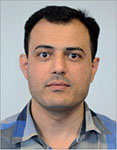3D numerical simulation of injection into a porous natural gas storage
Amin Chamani A and Vamegh Rasouli ACurtin University of Technology
The APPEA Journal 51(1) 653-666 https://doi.org/10.1071/AJ10046
Published: 2011
Abstract
The increasing demand for the consumption of natural gas has attracted the interest to store natural gas in depleted reservoirs. Natural gas is injected into the depleted reservoir and then produced once needed to be supplied to the consumers through pipelines.
Changes of reservoir fluid pressure due to injection/ depletion will result in the local changes of stress regime inside the reservoir as well as the surrounding rocks. These stress fluctuations will primarily lead to the deformations and changes of the loads exerted on the wellbore. This can potentially trigger hazardous events such as considerable land surface movements, wellbore instability and casing collapse, fault reactivation, and cap rock failure. Therefore a good knowledge of reservoir geomechanics is required when planning storage of natural gas in a depleted reservoir.
In this paper the concept of effective stress and pore pressure will be reviewed. A 3D finite element (FE) numerical modelling technique is developed to investigate the changes in stresses and displacements either during the injection or the depletion in a complete isotropic elastic media. The numerical code is used to simulate the injection-induced stress and displacement fields at a field scale for a hypothetical model with an embedded porous formation. The effect of formation rock mechanical properties such as Young’s modulus is also investigated through a series of sensitivity analysis. The results are presented and interpreted and various conclusions are made.

Amin Chamani is a PhD candidate at Curtin University of Technology in Perth. His PhD research topic is about elasto/visco-plastic finite element simulations of injection and depletion in porous reservoirs. For simulation purposes, he has developed a sophisticated 3D FEM code. Amin holds a BSc in Mining Engineering and a MSc in Rock Mechanics. Amin’s research interests include the applications of numerical analysis as applied to various problems in petroleum geomechanics with a particular focus on reservoir simulation. amin.chamani@postgrad.curtin.edu.au |

Vamegh Rasouli is an associate professor at the department of petroleum engineering. He is a Chartered Professional Engineer (CPEng) and is a registered engineer with the National Professional Engineers Register (NPER) of Australia. After completing his PhD in 2002 from Imperial College, London, Vamegh took up the position of assistant professor in the department of petroleum engineering at Amirkabir University of Technology (Iran). In 2006 Vamegh joined the department of petroleum engineering at Curtin University to support the delivery of the department’s master of petroleum well engineering—and to carry out research in his specialist area of wellbore stability, sanding, hydraulic fracturing, etctera. He established the Curtin Petroleum Geomechanics Group (CPGG); it has completed number of successful research and consulting projects. He now supervises six PhD students and numerous master students. Vamegh has also been a consulting engineer on various geomechanics-related projects with Schlumberger’s Data and Consulting Services (DCS) in Perth. v.rasouli@curtin.edu.au |


